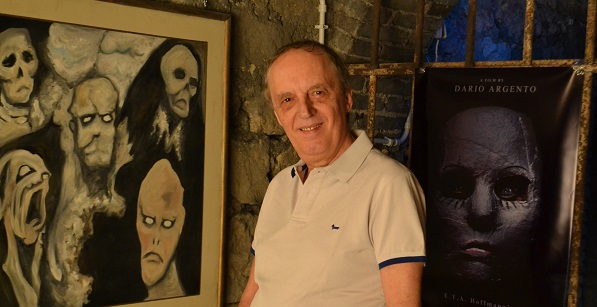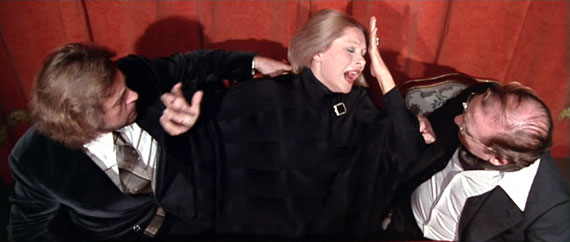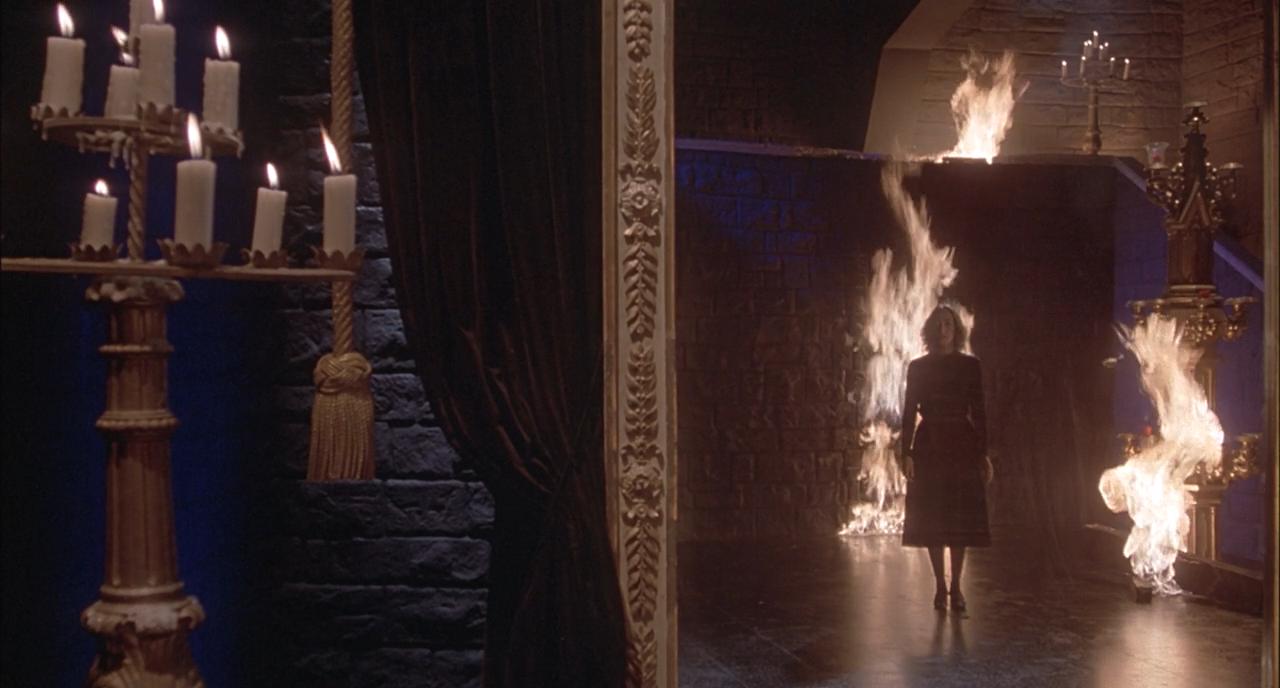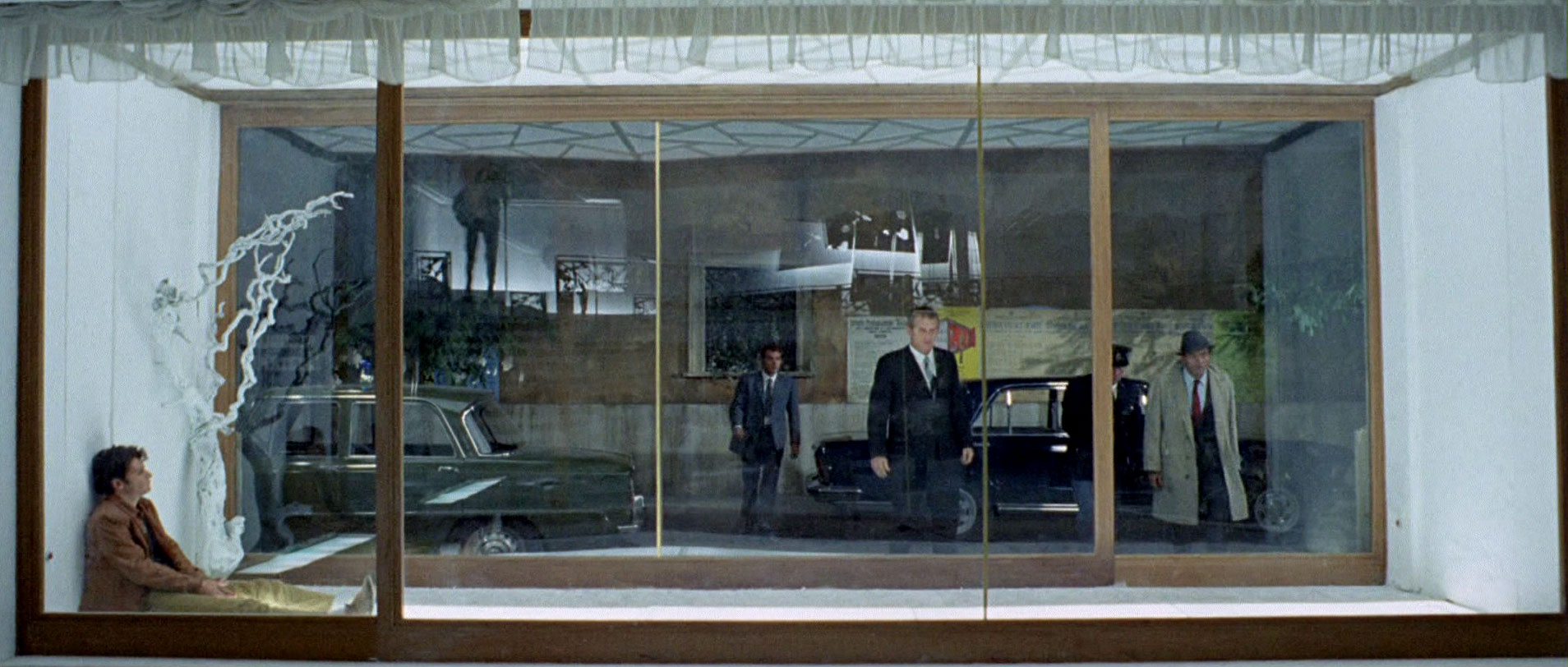[Editor’s note: Dario Argento has embarked on an Indiegogo campaign to raise funds for his new production, The Sandman. Read an interview with filmmaker Michele De Angelis here on Keyframe tomorrow.]
My first meeting with Dario Argento was when I was around seven. It was through my brother, who used to scare the pants off me, telling me about sharp knives, squeaking doors and the merciless killers of Argento’s latest films. Some said there are reflections of Argento’s cinema in my own work, which was totally unconscious but if I think about it, also impossible to avoid.
Dario Argento changed the way thrillers are made. He paved the way for a whole generation of filmmakers grew up in the seventies. His dazzling technical skills, daring visuals and spiraling storytelling are as compelling today as they were forty years ago. He’s part of movie history and he will be forever amongst the giants of not only Italian, but world cinema. I got the chance to speak with him this past month.
Michele De Angelis: You were a film critic and a screenplay writer before going behind the camera. How was your first day on the set of The Bird with the Crystal Plumage as a director?
Dario Argento: I must say I was very well prepared. I grew up by myself, thinking, writing, being lonely. Suddenly I was surrounded by a crowd asking me every kind of questions. It was shocking at first, but then I had to get used to it, fast. It took few days. But as I said, I worked hard before. I drew storyboards, wrote down a shooting list (list of takes and angles, with camera position, the director is going to shoot for each scene). I knew it was hard to shoot a movie, but to me came natural after all the work I’ve done.
De Angelis: When you were planning The Bird with the Crystal Plumage, did you realize that it was going to be a hit and spawn an entire genre?
Argento: No. But I thought it was very interesting. When I was planning the shooting and the visuals, I realized the movie was different from everything else made in that period not only in Italy, but also worldwide.
I was confident enough, I didn’t think about success. In all my career I never pursued success, I never minded. I knew the movie was going to be liked by a large audience. But I never thought it was going to be so huge. In the U.S. it was number one at the box office for a week. That never happened before, a feature from a young Italian guy, a first-time director. I was overwhelmed.

De Angelis: Which are your thoughts about the other Italian giallos of the time that followed the success of yours?
Argento: I didn’t care. It was irritating. They were copying everything, even the titles with the name of the animals. They made dozens of this kind, but I didn’t watch them.
De Angelis: Your first three movies have an animal in the title. These are now commonly called ‘The trilogy of the animals.’ But which is your relationship with the animals?
Argento: Animals are part of nature, so they are part of our world. There are animals in all my movies, when not in the title, they are in the film. I love all of them. Cats, dogs, fishes and insects. Every single species.
De Angelis: The titles of your films are always very effective and original. Do you choose them by yourself?
Argento: Absolutely. It’s only I to choose a title. Sometimes I choose them at the very early stage of pre-production, some others when I’m already shooting. I use temporary titles very often, to mislead who reads them. When I shot Deep Red, during production I used the title ‘The Sabre Toothed Cat;’ it was almost a practical joke. I then found the title Deep Red at the very end. While for Suspiria, it was different, the title came to my mind even before to write the script.
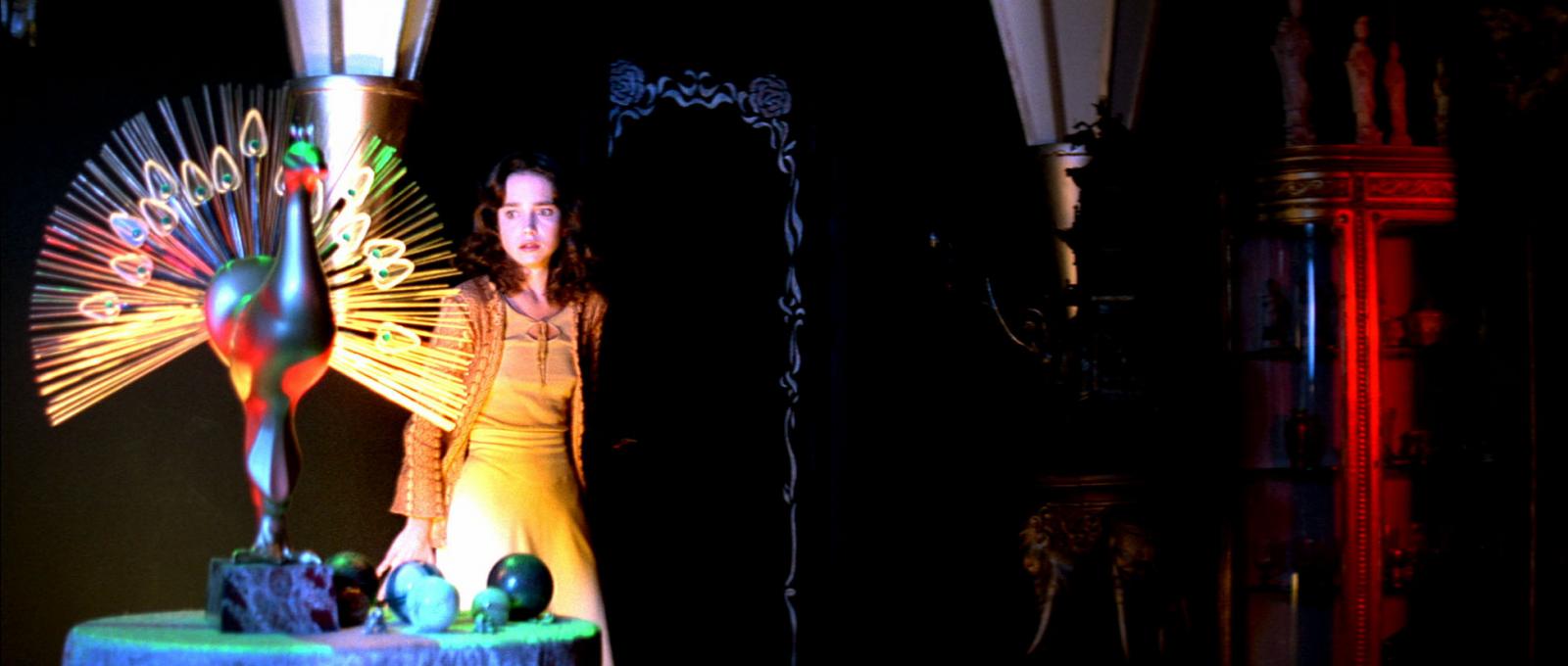
De Angelis: Our eyes see something, but our brain record the images in a different way. In all your first films there’s the recurring theme of perception…,
Argento: I’m fascinated by recollections. An experiment that was made even in universities: ten persons see the same thing happening, all of them will give you a similar recollection of it, but different at the same time. Some saw something and the others didn’t. Some will tell you about images or things that weren’t there. Truth is: we are slave of our culture, our readings, our thoughts.
De Angelis: Does memory also create mind’s superstructures, symbols etc.?
Argento: Indeed. In The Bird with the Crystal Plumage, I challenged both conventions and the audience. The black-dressed man is usually the bad guy and the white-dressed, fancy, woman is usually the victim, the good one. But I did exactly the opposite. I played with the common memory, that meant to play even with conventions and symbols. White is the common symbol for good and black is the common symbol for evil. You trade places and you subvert the conventions. Everybody will fall for it.
De Angelis: Details of eyes are always to be found in your movies…
Argento: The eye is crucial. Think about Kino-Eye by Dziga Vertov, one of most fascinating films for me. Being like a camera, the eye is exactly the meaning of cinema.
De Angelis: Starting with Deep Red, music took one of the main roles in your movies. Which is your contribution during the scoring of your films?
Argento: I usually go to the composer and discuss a lot with him. Sometimes my movies are created at the same time of the music. For The Card Player Claudio Simonetti was coming every day on the set to bring some stuff and I was listening to it during the lunch break. So when I finished the film, the score was already done. It was the same for Suspiria, the main themes were composed by the Goblin while I was shooting. I played some even for the actors, to give a rhythm to their characterization, a deeper meaning.
For Deep Red, the Goblin stepped in the project half way trough the shooting schedule, and we were meeting at night from time to time. It was a long, complex process, with a stunning result.
De Angelis: Deep Red has a supernatural aspect, specially in the psychic character. Had you already in mind to shoot an horror film?
Argento: After Deep Red I thought I had said enough for the moment in the thriller genre. I’ve reached a paroxysms, an extolling of the nightmares, I’ve used symbolism and surrealism. I wanted to do something stronger, something harder. It was time to do a horror film. A tough and powerful one. And I thought to the witches, that weren’t used that much in motion pictures. It was very interesting, and I was reading many books. So Suspiria was born, one of my best films.
De Angelis: Were you fascinated even before by the witches and occultism?
Argento: From a cultural point of view, I would say so. I liked to read tales and essays. But I never was into occultism. I didn’t believe in it and never practiced. I was very interested in that kind of environment. A strange, exoteric, occult world inhabited by people that could change reality.
De Angelis: Suspiria and Inferno are like reality suspended. Did you think this dreamlike structure was more helpful to tell these kind of stories?
Argento: Apparently they are similar but they are also different. They tell about strange, unbelievable occurrences. One it’s about witchcraft and another one is about alchemy. They must be suspended from reality, it’s like to live in parallel worlds.
De Angelis: In Suspiria for the first time, there’s a voice over introducing the events. It’s yours…
Argento: I wanted to participate first person, being an author. I wanted to tell the audience about the events with my own voice.
De Angelis: Why did you choose Keith Emerson to score Inferno instead of the Goblin?
Argento: The movie was very different from the others and I wanted a complete discontinuity from my previous work. I’ve met Keith Emerson and I’ve seen one wonderful concert of his. So I decided to let him score the movie. He did an amazing job.
De Angelis: The three mothers, spread around the globe, deciding about the lives and deaths of everybody, is this a metaphor for the occult economical powers influencing the world’s life?
Argento: Absolutely not. It’s a world of dreams and nightmares and have nothing to do with reality. All my movies are like that. I don’t tell real stories, the ones you could read on the newspapers or watch at the telly. I tell stories that come straight from deep inside me, from the dark side. The strange, bastard and perverse side of my nature. Maybe this is the reason why my films are so popular around the world, they are not about the daily life but the inner self.
De Angelis: The aspect ratio of your movies, specially in your first films is anamorphic, that you continued to use even later on. But some are just panoramic or even 166:1. How do you choose the ratio of your films?
Argento: I can’t really explain it, I choose it by instinct while writing the script. It’s the story itself suggesting me the aspect ratio it should have. I like also to experiment and to look for new visual forms.
De Angelis: How do you like your movies to be screened, I mean the restored ones, on film or on digital?
Argento: I believe it will be very hard to see any of them screened on film. Most of the movie houses converted to digital. All the restorations of my films were made with digital tools, mostly by the French. Digital took over movies and there’s nothing to do about it.
De Angelis: Do you like to shoot with digital cameras?
Argento: In the beginning I was very scared, specially to have problems with the colours. Now I believe, I can achieve good results. To work with Storaro, (the dop of The Bird with the Crystal Plumage) using digital tools while restoring The Bird, it was very interesting.
De Angelis: What about Univision the aspect ratio created by Storaro? The Bird with the Crystal Plumage now has a format of 2:1 instead of the original Techniscope 2.35:1…
Argento: A choice made by Vittorio and me. Vittorio had just finished the restoration of Apocalypse Now and said that even Coppola was very happy with this format.
De Angelis: What do you think about new Italian directors? A lot of independents want to shoot horror and thrillers.
Argento: There are many difficulties to shoot movies with fair budgets in Italy, the crisis doesn’t help. Last year in Courmayer at The Noir Film Festival, there were many young artists that have shot horror and thriller feature films, that were never screened in Italy. It was very interesting and I saw some stuff that showcased visionary talents. Unfortunately in Italy money is invested in sure things like comedies.
De Angelis: Let’s chat briefly about your new project The Sandman. How this project was born?
Argento: It’s a collaboration with David Tully, an American screenplay writer. It’s inspired by a famous comic book, that was also inspired by a Hoffman’s tale. It’s my will to overcame the ‘giallo.’ To mix it with horror into something illusory and dreamlike, a real nightmare. With an ‘nightmarish’ actor like Iggy Pop.
De Angelis: How did you involve him?
Argento: It was suggested to me, then we spoke and he’s a huge fan of my movies. He’s very happy to play in the movie. We just launched a crowd funding campaign on Indiegogo.
De Angelis: Why a great artist like you is using crowdfunding? Is it to have more creative freedom?
Argento: I always had creative freedom. This is a way for the audience, my fans, the people who love my movies, to actively participate to the process. From all around the world they can more or less decide which way to go. This is the first time for me and I believe it’s exciting to know, that so many will contribute one way or another to the creation of this film.
De Angelis: Posters, T shirts, dedicated tour on the locations of your movies. Dario Argento is a name that transcended cinema to become a cultural icon…
Argento: I don’t want to think about it. It’s enough to get the love and affection of many around the world from Korea to Japan. From south America, specially Brazil my mom’s country, to United States. I was in Chicago with my movie Dracula 3D last year and there was a huge audience to greet me. It was great.

